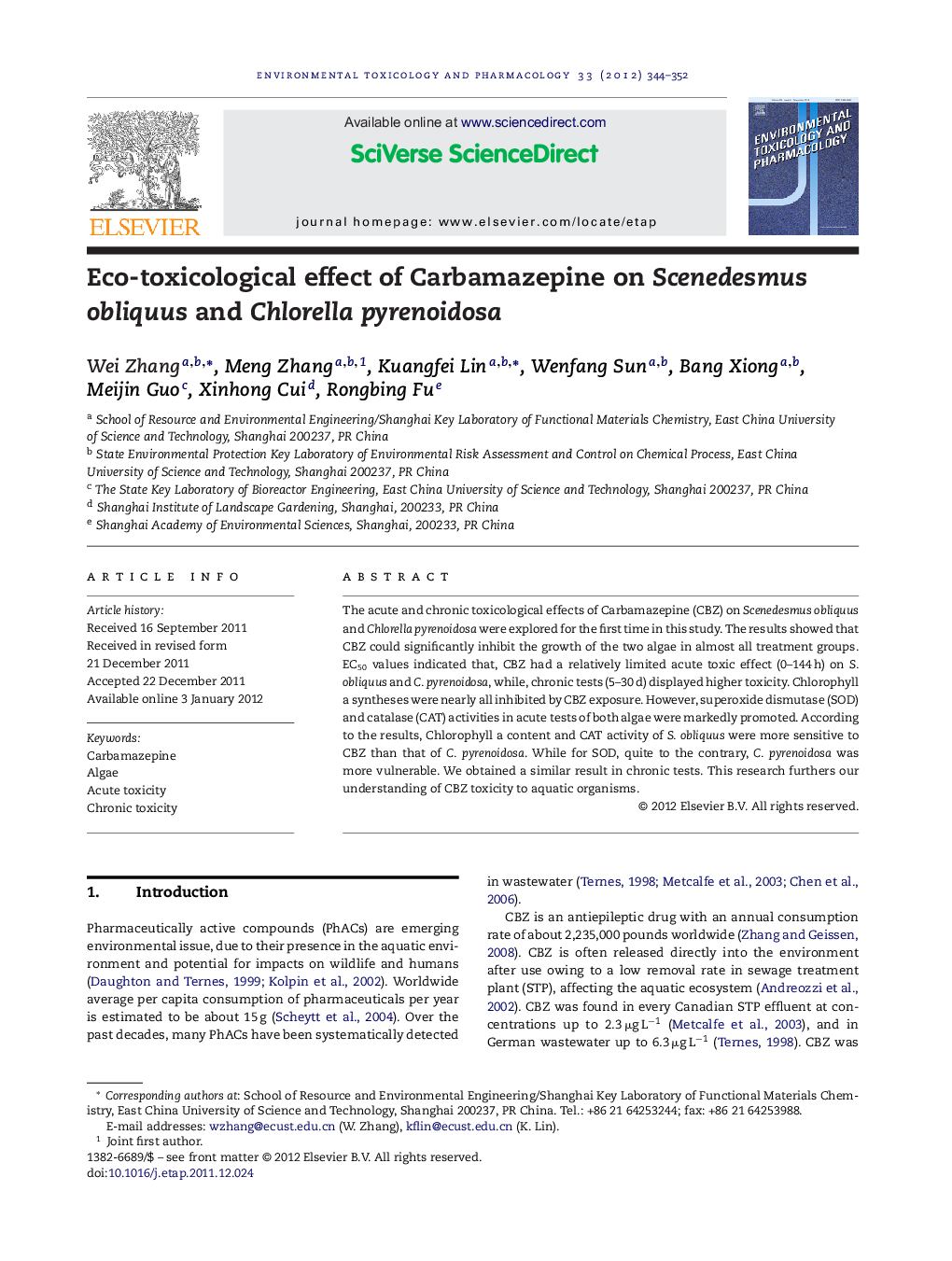| Article ID | Journal | Published Year | Pages | File Type |
|---|---|---|---|---|
| 2583525 | Environmental Toxicology and Pharmacology | 2012 | 9 Pages |
The acute and chronic toxicological effects of Carbamazepine (CBZ) on Scenedesmus obliquus and Chlorella pyrenoidosa were explored for the first time in this study. The results showed that CBZ could significantly inhibit the growth of the two algae in almost all treatment groups. EC50 values indicated that, CBZ had a relatively limited acute toxic effect (0–144 h) on S. obliquus and C. pyrenoidosa, while, chronic tests (5–30 d) displayed higher toxicity. Chlorophyll a syntheses were nearly all inhibited by CBZ exposure. However, superoxide dismutase (SOD) and catalase (CAT) activities in acute tests of both algae were markedly promoted. According to the results, Chlorophyll a content and CAT activity of S. obliquus were more sensitive to CBZ than that of C. pyrenoidosa. While for SOD, quite to the contrary, C. pyrenoidosa was more vulnerable. We obtained a similar result in chronic tests. This research furthers our understanding of CBZ toxicity to aquatic organisms.
► CBZ could obviously inhibit the growth of Scenedesmus obliquus and Chlorella pyrenoidosa in almost all treatment groups. ► EC50 values indicated that CBZ had a limited acute toxic effect on both algae while chronic tests displayed higher toxicity. ► Chlorophyll a synthesis were nearly all inhibited by CBZ exposure, and S. obliquus were more sensitive. ► Superoxide dismutase (SOD) and catalase (CAT) activities in acute tests of both algae were markedly promoted. ► CAT activity of S. obliquus were more sensitive to CBZ, while for SOD, C. pyrenoidosa was more vulnerable.
